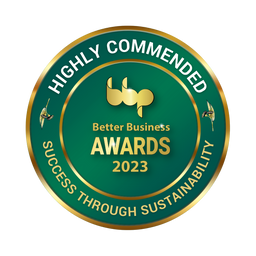As the world shifts towards more ethical and sustainable alternatives, vegan leather has gained popularity as a substitute for traditional animal leather. But is it truly better for the environment? Let’s explore the growing landscape of plant-based leather alternatives, their benefits, and the trade-offs every conscious shopper should know.
Why Traditional Leather Comes at a Cost
Conventional leather—primarily made from cowhide—has a significant environmental footprint. It’s not just about livestock farming and deforestation. The leather tanning process often relies on toxic chemicals, contributing to water pollution and greenhouse gas emissions. According to global sustainability indices, the impact of animal-based leather far exceeds that of many synthetic or plant-based alternatives.
Enter Vegan Leather: What’s It Made From?
Vegan leather was once synonymous with plastic-based materials like PVC or PU. While these avoided animal cruelty, they introduced new environmental challenges related to plastic waste and pollution.
But the landscape is changing. Today, next-gen vegan leathers are increasingly made from natural and recycled sources. Here are some of the most promising:
-
Pineapple Leaves (Piñatex): A by-product of pineapple farming, it reduces waste without requiring extra land or water. However, it's typically reinforced with bioplastic, which affects its compostability.
-
Cactus (e.g. Desserto): Grown with minimal water and no pesticides, cactus leather is mostly biodegradable and considered one of the more eco-friendly options.
-
Mushroom (Mycelium): Cultivated using agricultural waste, this material is renewable and potentially compostable—depending on the binder used.
-
Apple Waste: Sourced from leftover apple skins and cores, this material gives food waste a second life, though it also often includes synthetic backing.
-
Cork & Grape Waste: Both materials are biodegradable and come from renewable processes, with minimal chemical intervention.
The Upside of Plant-Based Leathers
Switching to these alternatives offers several environmental benefits:
✅ Fewer Emissions: They bypass the methane emissions from livestock and the energy-intensive tanning process.
✅ Reduced Water Use: Most plant leathers use agricultural waste or low-water crops like cactus.
✅ Less Toxic Waste: Many new vegan leathers avoid the harsh chemical processes that traditional leather undergoes.
✅ Upcycling Waste: Using agricultural by-products helps cut down on overall waste and promotes circular design.
But Are Vegan Leathers Flawless?
Not quite. While they’re a step in the right direction, challenges remain:
-
Plastic Additives: Many still rely on petroleum-based resins for strength and durability, limiting their biodegradability.
-
Lifespan Concerns: Some plant-based materials wear out faster than real leather, meaning more frequent replacements.
-
End-of-Life Disposal: Even “natural” leathers can be hard to break down if they’re bonded with synthetic layers.
Choosing Wisely: Tips for Australians
If you’re shopping for sustainable leather alternatives, here’s how to make better choices:
-
Choose materials made from plant waste, not just plastic.
-
Check for eco-certifications like OEKO-TEX or Global Recycled Standard.
-
Ask about end-of-life options—can it be composted, recycled, or resold?
-
Think long-term—prioritise quality and durability.
-
Support local or ethical brands that disclose how their materials are sourced and processed.
Final Thoughts
Vegan leather—especially the newer, plant-based kinds—is proving to be a viable, lower-impact alternative to traditional leather. While not perfect, these materials represent a shift towards smarter resource use and a gentler footprint. For eco-conscious Aussies, the key lies in choosing wisely, caring for items properly, and embracing circular fashion wherever possible.
Less harm, more style—and a future that’s just a little greener.
Also read: How to Buy Secondhand Leather Handbags




